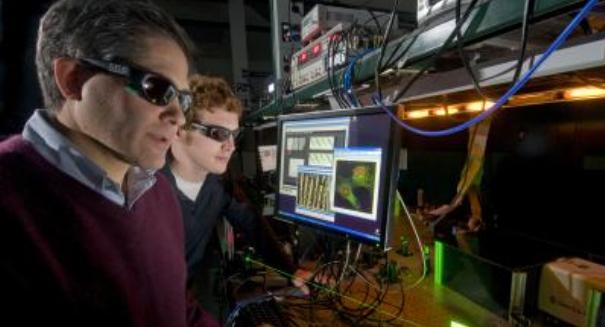
The laser is harmless to humans.
According to a news release from Michigan State University, airport security may soon be outfitted with a new tool for detecting bombs.
Marcos Dantus, Michigan State University chemistry professor and founder of BioPhotonic Solutions, has invested a laser that can identify traces of explosive chemicals on clothing and luggage.
“Since this method uses a single beam and requires no bulky spectrometers, it is quite practical and could scan many people and their belongings quickly,” Dantus posited. “Not only does it detect the explosive material, but it also provides an image of the chemical’s exact location, even if it’s merely a minute trace on a zipper.”
If you’re concerned about TSA screeners gaining access to a new piece of handheld technology, no need to worry. According to Dantus, this bomb-detecting laser would more likely be used in a conveyor belt to identify traces of explosive chemicals on bags and other items. The laser is harmless to humans.
Scientists have struggled for years to create lasers that are strong enough for detection, but harmless enough to utilize on people. Dantus’ inspiration for his invention came from work with Harvard University that made a laser that could be utilized to identify cancer, but has the beam output of a simple presentation pointer.
“While working on biomedical imaging, I began exploring additional applications,” Dantus noted. “We soon learned how effective it was for detecting traces of hazardous substances from distances up to 10 meters away.”
Dantus’ invention functions as a single beam, but utilizes two pulses. The first pulse resonates with specific chemical frequencies found in explosives. The second, a shadow pulse, acts as a reference. A disagreement between the two pulses signals the presence of explosive materials.
“The laser is not affected by the color or surface of clothes or luggage,” Dantus added. “The resonant pulse and the shadow pulse are always in balance unless something is detected. Our method has Raman chemical specificity, excellent sensitivity and robust performance on virtually all surfaces.”
A standalone prototype has not yet been developed but one could likely be created in approximately one year, according to Dantus.
The study’s findings are described in greater detail in the most recent issue of the journal Applied Physics Letters.
How long will it be before this new piece of technology arrives at the nation’s airports? How will this technology help TSA screeners and other security officials? Share your thoughts in the comments section.

Leave a Reply